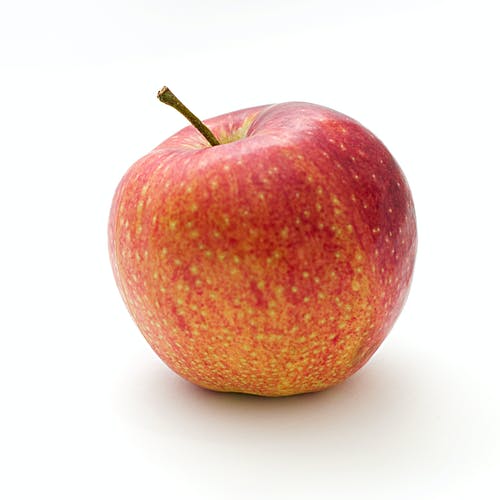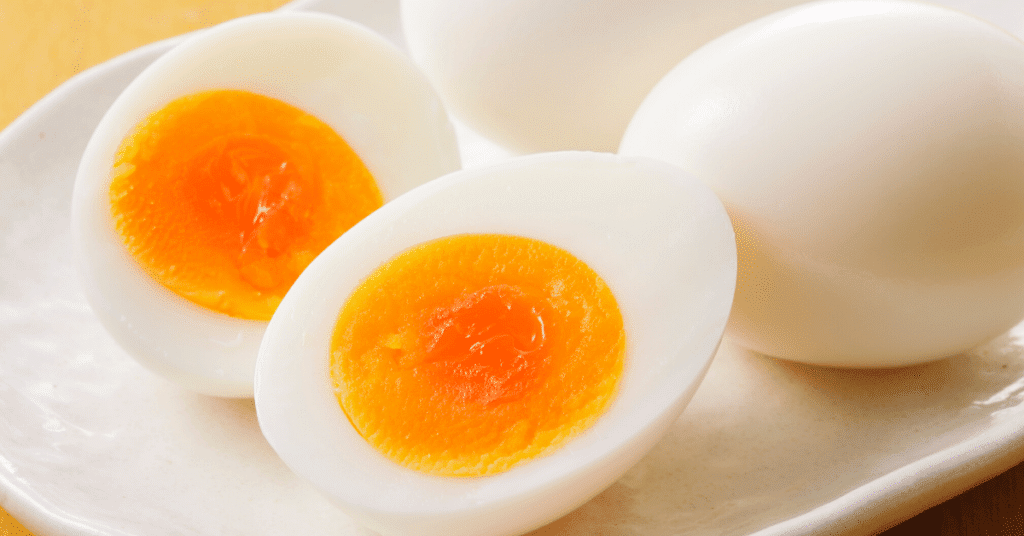The Macronutrient Ingredients
There are 3 different types of macronutrients that give us energy ⚡ and these are:
- Carbohydrates (4 kcal / gr)
- Protein (4 kcal / gr)
- Fat (9 kcal / gr)
Each food contains at least 1 of them or is a combination of 2 or 3. Some examples:
The oil consists exclusively of fats
Sugar only from carbohydrates (specifically sugars)
Fish 🐟 only from protein and fat
Most fruits consist mainly from carbohydrates and are low in protein
Milk 🥛 and egg 🥚 have an ideal ratio of carbohydrates, protein and fat (it is no coincidence that a human’s first food is the milk!)
Recommended Macronutrient Ratio
The recommended daily allowance for protein, fat, and carbohydrates is:
- Carbohydrates: 45-60%
- Protein 10-35% or 0.66g / kg of body weight regardless of gender (eg someone weighing 70 kg, at least 46 g of protein per day)
- Fats 20-35%
As we can see, there is a wide range in the ratio of macronutrients that indicates there are many healthy diets to choose according to our goals, taste preferences, and lifestyle. What we should always consider is the quality of the macronutrients as well as the fact that our diet should include fiber, water, and micronutrients.

An example of same macros and different Food Quality

1 apple 120 gr
CALORIES: 62 KCAL
CARBOHYDRATES: 16,8 gr.
of which sugars: 12gr.
PROTEINS:: 0,3 gr
FAT: 0 gr

12 grams of sugar
CALORIES: 47 KCAL
CARBOHYDRATES: 12 gr.
of which sugars: 12gr.
PROTEINS: 0 gr
FAT: 0 gr
We see that a macronutrient analysis shows that 1 apple gives the same sugars as 1 teaspoon of sugar. But our body and our metabolism take much more into account. Apple, for example, contains fiber, vitamins, minerals, trace elements, causes satiety, modifies the intestinal microflora and contains beneficial phytochemicals. You can read more about the fruit obesity paradox here.
In a similar way, the fat of nuts is better and more beneficial than the fat of french fries and so on. So, it is very important when we measure the macronutrients in our diet to choose healthy foods and to have in mind the overall picture of our diet.
Some quality indicators in a diet for example could be:
- Fiber
- Good Fats
- High Biological Value Protein
- Complex Carbohydrates
- Vitamins, Minerals and Trace Elements
- 5 Portions of Fruit & 5 Portions of Vegetables per day
- 2 liters of water per day
- Foods rich in phytochemicals
- Foods with probiotics or enzymes
- Superfoods, herbal drinks
- Avoiding caloric surplus and so on
Below, we will briefly look at each macronutrient group, their subcategories and their key characteristics.
Carbohydrates
Carbohydrates are broken down into glucose and other monosaccharides. They raise blood glucose levels and supply energy to our body. They are divided into simple and complex carbohydrates.
Simple Carbohydrates
They consist of small molecules, mainly monosaccharides or disaccharides, which rapidly raise blood glucose levels. Some examples of simple carbohydrates are:
- glucose, sucrose, fructose
- white and brown sugar
- glucose or corn syrups found in many processed foods
- fruit juices.
Complex Carbohydrates
They are made up of larger molecules that break down into monosaccharides . Complex carbohydrates cause a steady and slow rise in blood glucose over a long period of time.
Examples of complex carbohydrates are starch and fiber. Foods rich in complex carbohydrates are:
- whole grain products
- rice & legumes
- peas & corn
- fruit & vegetables
- nuts
- oats and cereals
Comparison of foods rich in Carbohydrates
Oat

50 gr. /half cup of oat flakes
- Calories: 195 kcal
- Carbohydrates: 33.15 gr
- Sugars: 0 gr
- Fiber: 5.3 gr
- Protein: 8,45 gr
- Fat: 3,45 gr
Carbohydrate Analysis
Wholemeal spaghetti

56 gr dry or 1 cup boiled
- Calories: 195 kcal
- Carbohydrates: 42 gr
- Sugars: 0 gr
- Fiber: 4,6 gr
- Protein: 8,2 gr
- Fat: 0,8 gr
Carbohydrate Analysis
Lentils

50 gr raw or 1 cup boiled
- Calories: 175 kcal
- Carbohydrates: 30.05 gr
- Sugars: 1 gr
- Fiber: 15.25 gr
- Protein: 12,9 gr
- Fat: 0.55 gr
Carbohydrate Analysis
Fruit Salad

2 slices of pineapple, 1 cup blueberries 100gr. and 10 large strawberries = 5 servings of fruit (400gr)
- Calories: 189 kcal
- Carbohydrates: 48 gr
- Sugars: 34.9 gr
- Fiber: 5.3 gr
- Protein: 2,4 gr
- Fat: 0,8 gr
Carbohydrate Analysis
Proteins
The proteins we get from our food are broken down into peptides and amino acids. Amino acids in turn are used by our body to synthesize proteins. Proteins are structural and essential macromolecules for every living organism since they are involved in all cell functions.
Proteins in our body:
- Act as enzymes that catalyze biochemical reactions, and are vital to metabolism
- Have structural or mechanical functions, such as cell skeletal proteins, that help maintain the shape of cells
- Are also important in intercellular communication, immune system, cell tissue formation, and cell cycle
Finally, they are essential for our diet, as humans can not synthesize all the amino acids, but must get them from food. Through the process of digestion, the protein is broken down into free amino acids that can be used for protein synthesis.
Amino acids

Amino acids are the basic building blocks of proteins . There are 20 different amino acids whose combination gives us a huge number of proteins (10,000 different), which in turn participate in basic and vital functions of the body. Proteins in fact make us what we are!
Of the 20 amino acids, 9 are classified as essential (EAA) for our diet, since our body cannot synthesize them and we must take them exclusively from food (or supplements)
- Essential Amino Acids EAA (9)
- Potential Essential (6)
- Non Essential(5)
- Valine, Val, V.
- Threonine, Thr, T.
- Tryptophan, Trp, W.
- Isoleucine, Ile, I.
- Histidine, His, H.
- Leucine, Leu, L.
- Lysine, Lys, K.
- Methionine, Met, M.
- Phenylalanine, Phe, F.
- Arginine, Arg
- Cysteine, Cys, C.
- Glutamine, Gln, Q
- Glycine, Gly, G.
- Proline, Pro, P.
- Tyrosine, Tyr, Y.
Alanine, Ala, A.
Aspartic acid, Asp, D.
Asparagine, Asn, N.
Glutamic acid, Glu, E.
Serine, Ser, S.
* There are two additional special amino acids: selenocysteine (Sec, U) and pyrrolysin (Pyl, O).
Biological Value of Proteins- BV
The amino acid composition of proteins varies. The biological value (BV) reflects the similarity in the amino acid composition of the protein with that of animal tissues. Thus, BV shows what percentage of a dietary protein provides EAA (essential amino acids) for the body:
Classification of foods based on the index (BV) of Biological Value of Protein

BV 100
The protein in chickens' egg , has the maximum index of biological value BV 100 . This practically means that eating 1 egg all the protein it contains will be absorbed by our body.

BV 104
The whey protein is the only source of protein that surpasses the Egg with a BV of 104 !

BV 90
Animal proteins contained in milk and meat have a very high BV index around 90 .

BV 70
The proteins found in soy have a fairly high index of biological value. The highest BV in a row are: isolated soy protein , whole soy beans, soy milk and then tofu and soy flour.

BV 40
Cereal and vegetable proteins are in a quite low BV around 40
Fat
Fats are distinguished from proteins and carbohydrates as they give us almost twice as much energy per gram. While 1 g of protein or carbohydrate has 4 calories, 1 gram of fat gives us 9 calories .
Fats are broken down into fatty acids and glycerol . Fats are essential in our body for tissue synthesis and hormone production .
Saturated fatty acids found in animal fats, are usually in solid form, while vegetable fats are usually in liquid form (excluding palm oil and coconut oil). Vegetable fats are high in monounsaturated and polyunsaturated fatty acids, the so-called “healthy fats”.
Partial hydrogenation of unsaturated fatty acids (as in food preparation ) produces trans fatty acids , which are solid or semi-solid at room temperature. The main dietary source of trans fatty acids is partially hydrogenated vegetable oils, which are used in the manufacture of certain foods (eg biscuits, crackers, chips). b> to extend the service life. Trans fatty acids can increase LDL (bad) cholesterol and lower HDL (good) cholesterol. They can also independently increase the risk of coronary heart disease .
Essential Fatty Acids (EFAs)

The essential fatty acids that we need to get from our diet are only 2:
- α-linolenic acid (belongs to ω3 fatty acids )
- Linoleic acid (belongs to the omega-6 fatty acids )
There are other ω6 fatty acids(eg arachidonic acid) and omega-3 fatty acids (eg eicosapentaenoic acid, eicoshexaenoic acid) that are required by the body but can be synthesized from the 2 essential fatty acids (EFAs) .
- Sources of Linoleic Acid (ω6)
- Sources of Alpha Linoneic Acid, ALA (ω3)
- Nuts (10.8 gr / 6 large walnuts)
- Sunflower Seeds (10.6 g / 28 g or 1/4 cup)
- Sunflower oil (1.7 g / tablespoon)
- Tofu (6g / 120g)
- Almonds (3.5 g / 28 almonds)
- Egg (0.5 g / egg)
Daily Intake: about 8-10 g per day or 4% of daily calories.
Tip : Add 5 crushed walnuts to your yogurt or salad and you will get the recommended linoleic acid and twice the A-linolenic acid of the day, with just 150 extra calories !
- Flaxseed Oil (7.26 g / tablespoon)
- Flaxseed (2.35 g / tablespoon)
- Chia Seeds (1.67gr / tablespoon)
- Nuts (1.25 gr / 3 whole walnuts)
Daily Intake: about 1.2 g per day or 0.5% of daily calories.
Tip : Add 5 crushed walnuts to your yogurt or salad and you will get the essential linoleic acid and twice the A-linolenic acid of the day, with just 150 calories!
Sources & Links
- Overview of Nutrition - Adrienne Youdim , MD, David Geffen School of Medicine at UCLA
- Πρωτεΐνη -Wikipedia
- Essential Aminoacids
- Macronutriets-National Agricultural Library U.S. DEPARTMENT OF AGRICULTURE
- 10 Foods High in Omega-6, and What You Should Know-Healthline
- Health benefits of plant-derived α-linolenic acid
- DRVs Adults-EFSA -European Food Safety Authority
- Calorie King
